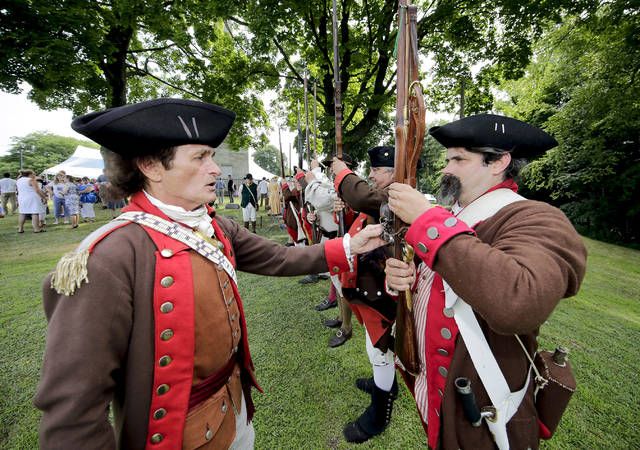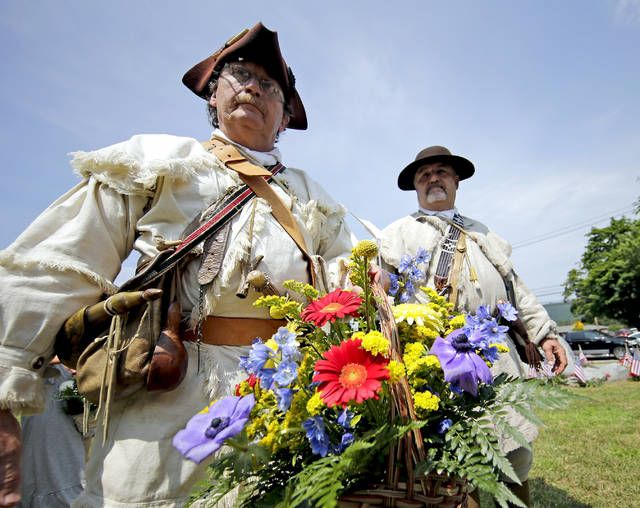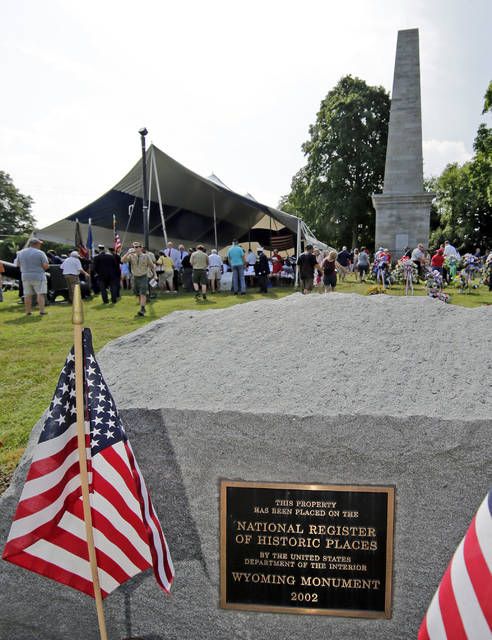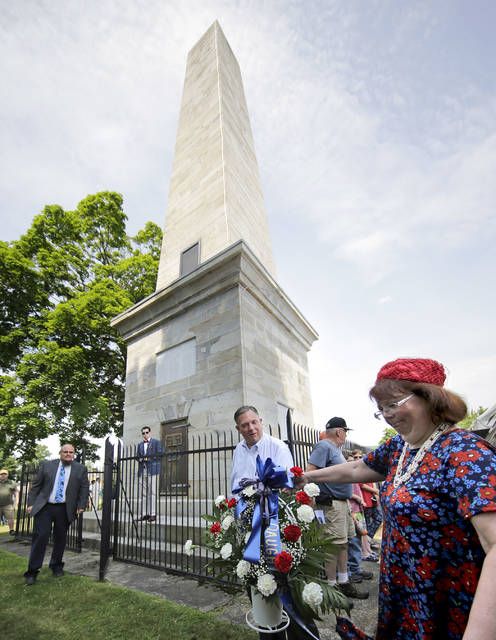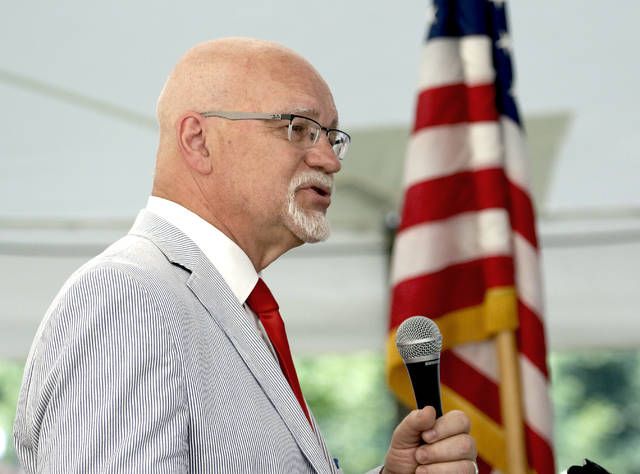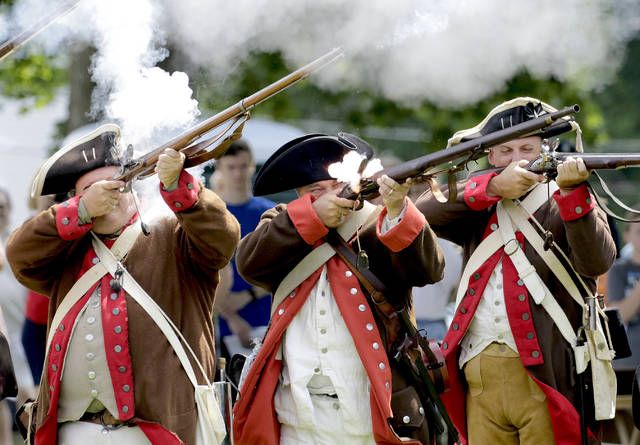Click here to subscribe today or Login.
WYOMING — The band played, wreaths were laid and sweat poured forth from many an armpit and brow beneath the big tent Wednesday morning.
For the one hundred and fortieth time, somber citizens gathered to mark July 3, 1778, when the fields here ran red with the blood of patriots who were massacred by a combined force of British troops and their Iroquois allies during the Revolutionary War.
SEE MORE
Watch our video feature on Wednesday’s ceremony here.
The story is not new. The gathering is a tradition that goes back to 1878 — the centennial of the Battle of Wyoming.
What happened when keynote speaker Clark Sweitzer finished his address this Fourth of July was novel, at least in the annual ceremony’s modern history.
Despite temperatures near 100 degrees, the sweltering audience rose to its feet to applaud.
“In all my years with the association, he is the first person I can remember who has received a standing ovation,” said Wyoming Monument Association President Marcella Starr, whose group looks after the park and obelisk dedicated to those killed in the battle.
“People are just raving about his speech.”
What, exactly, did Sweitzer, head of the Social Studies Department at the Wyoming Seminary Lower School, say?
Before an estimated audience of about 400, he gave a speech entitled “That’s the Rest of the Story.”
The title paid homage to the famous catchphrase used by the late, great radio host Paul Harvey.
The rest of the story, as it were, was about the people of the Wyoming Valley, and how their lives and legacies fulfilled the destiny secured by those who laid down their lives on that fateful day 240 years ago.
“We are the legacy to them and from them, and we need to make that connection and remind our children of that,” Sweitzer said.
Of course, he didn’t skimp on the history — from the terror and devastation to the way in which word of the massacre galvanized patriots across the 13 colonies-turned-states and created a “public relations nightmare” for Britain’s King George III.
But Sweitzer also talked about how descendants of those who fought here — and those who came later — turned the Wyoming Valley into a thriving center of industry and commerce.
His late father, who worked as a coal miner, was among them, until he joined the other tradition by serving in World War II.
Sweitzer also encouraged his listeners to consider the ways in which the valley’s heritage can continue to serve its residents and the nation — through heritage tourism, for example.
“One of the the things that I wanted to try to convey to the audience was that what we need to remind ourselves of and communicate to our young is that we are the rest of the story,” Sweitzer said afterward.
A graduate of King’s College, Sweitzer holds a master’s degree from the University of Scranton. A recognized teacher and author on area history, he developed an academic curriculum on local history and DVDs on Wyoming Valley history.
Construction on the monument — which marks the gravesite for bones of victims — began in July 1833 but was suspended due to a lack of funds when the monument reached 20 feet. Construction resumed in 1841 when the Ladies Luzerne Monumental Association, which became the Wyoming Monument Association in 1860, raised money to complete the memorial at a cost of $8,000.
On the 100th anniversary of the battle on July 3, 1878, a commemoration service drew more than 50,000 to hear the main speaker for the event, U.S. President Rutherford B. Hayes. The service has been held on the battle anniversary every year since.
State Rep. Aaron Kaufer (R-Kingston), who attended Wednesday’s ceremony, recalled learning about the Battle of Wyoming when he was a second- or third-grader growing up in Kingston.
He said he also takes great delight in stories about how the state of Wyoming took its name from the region.
And he enjoyed the speech.
“I heard how Clark was a great speaker before,” Kaufer said. “He did a wonderful job. It was a great speech about how this is an integral part of our area’s history.”
